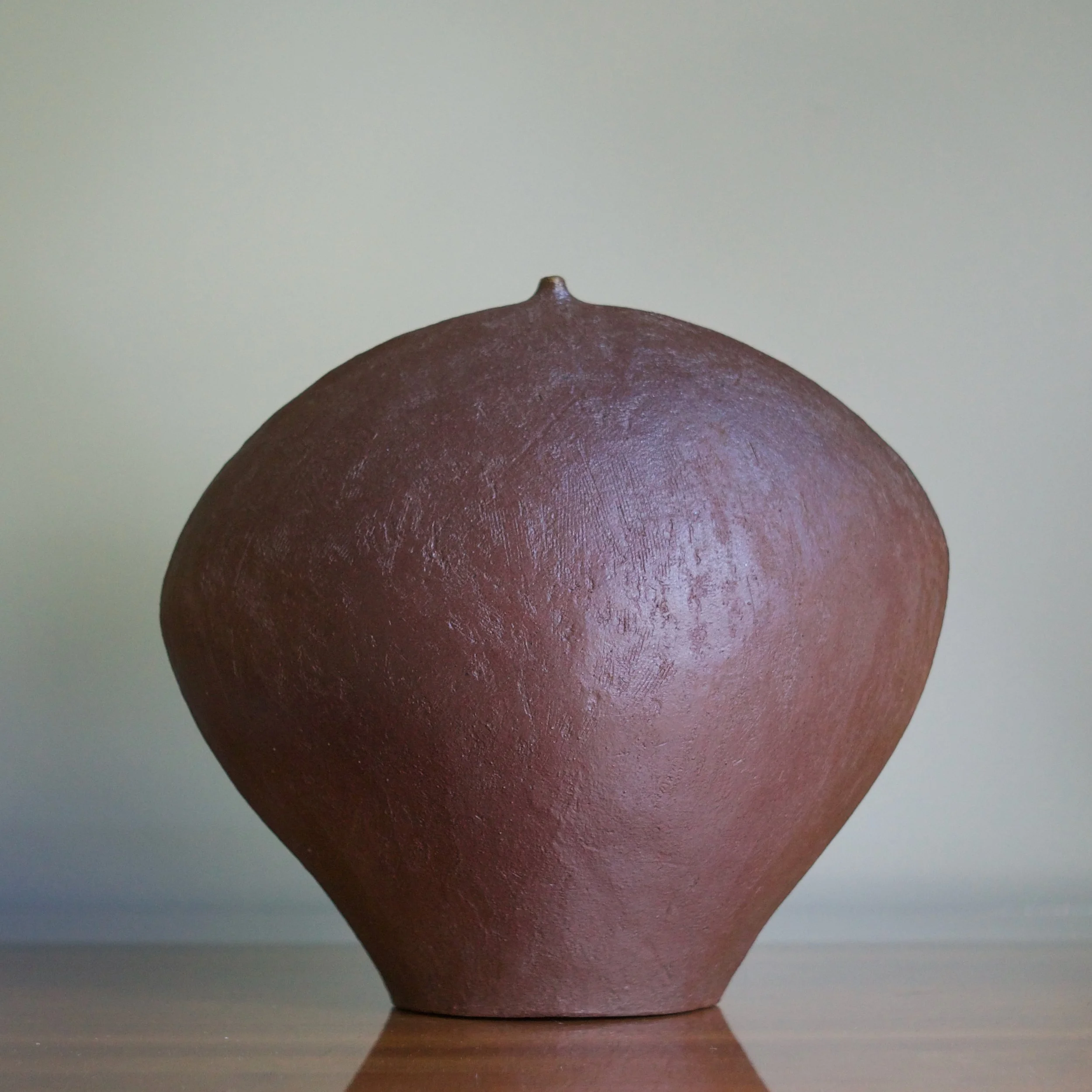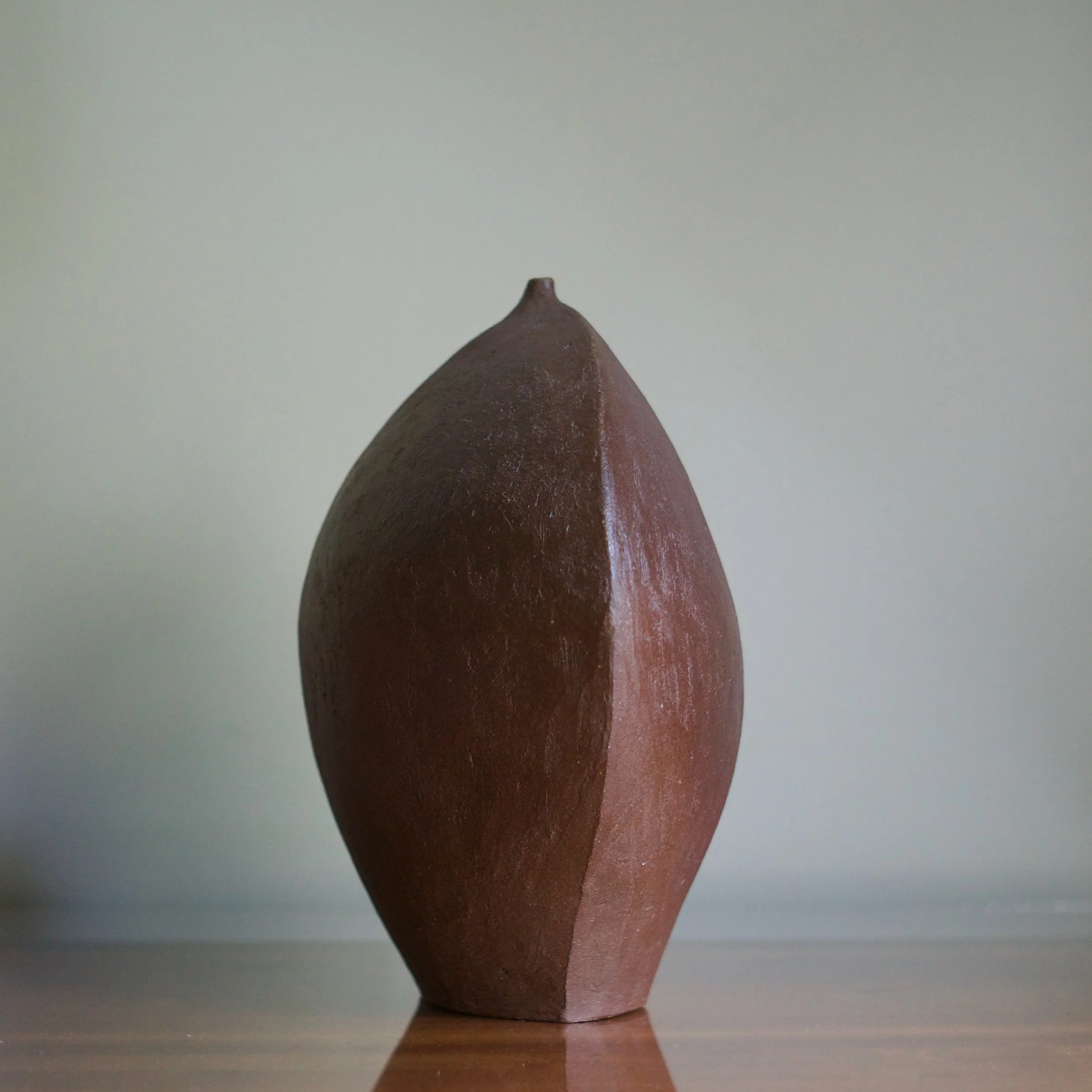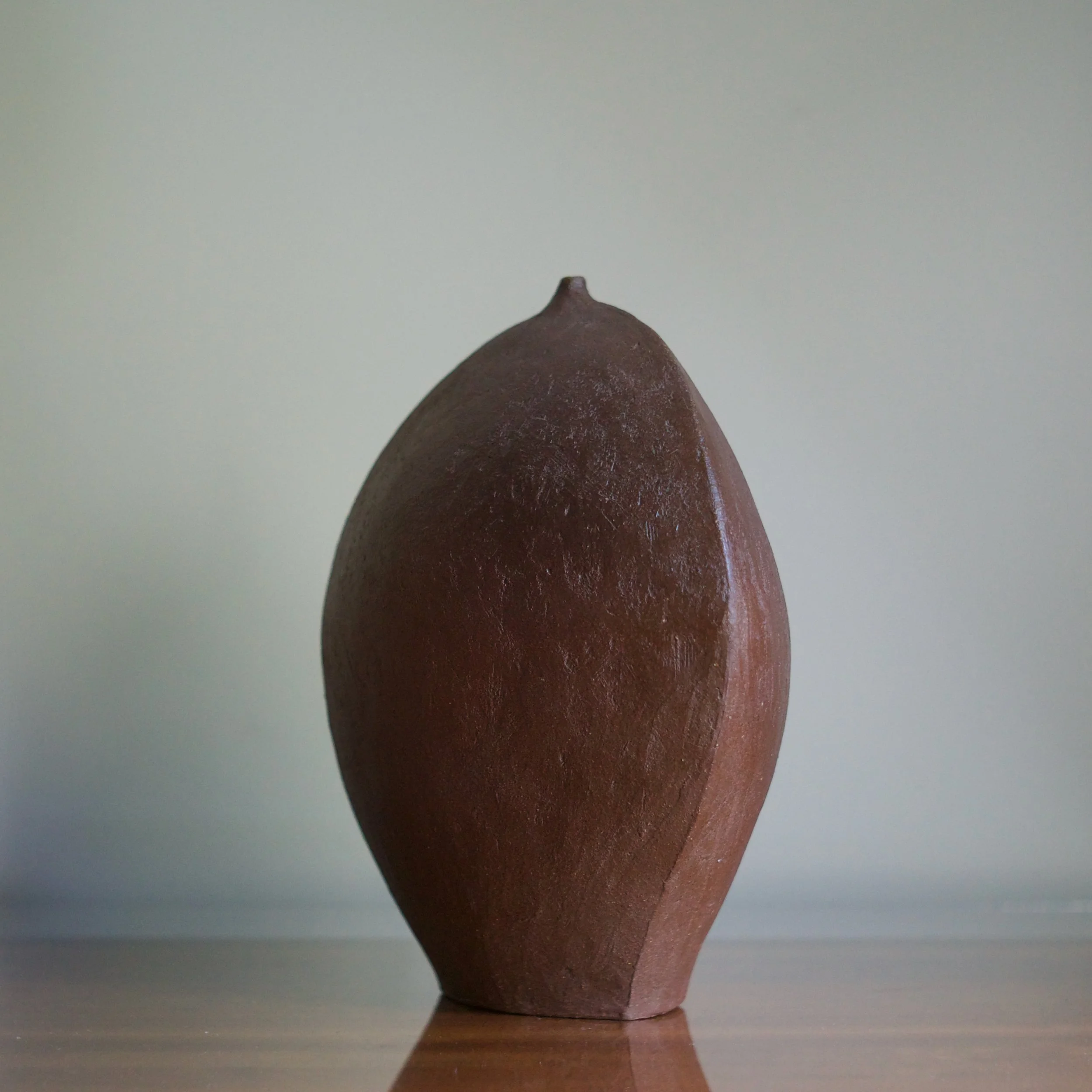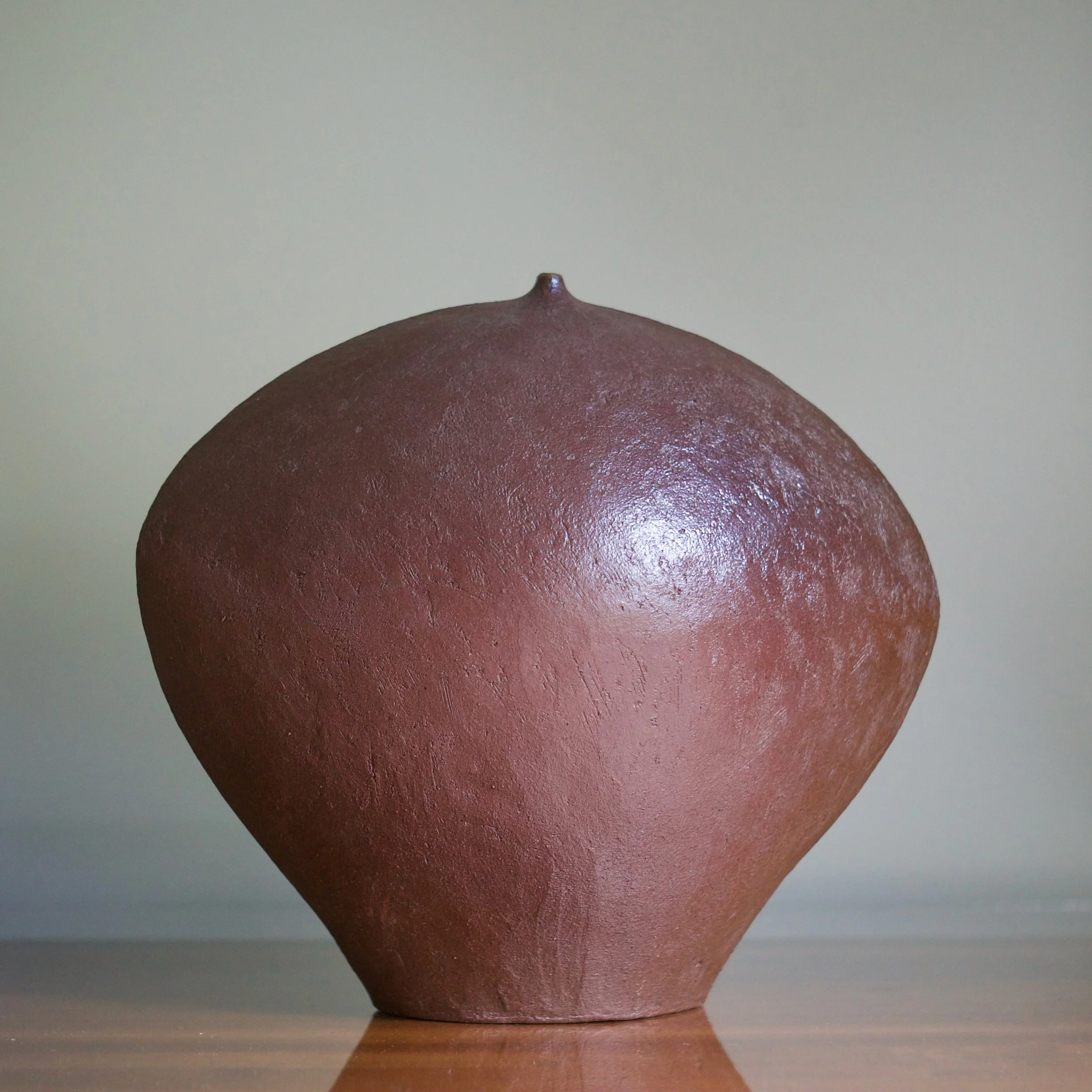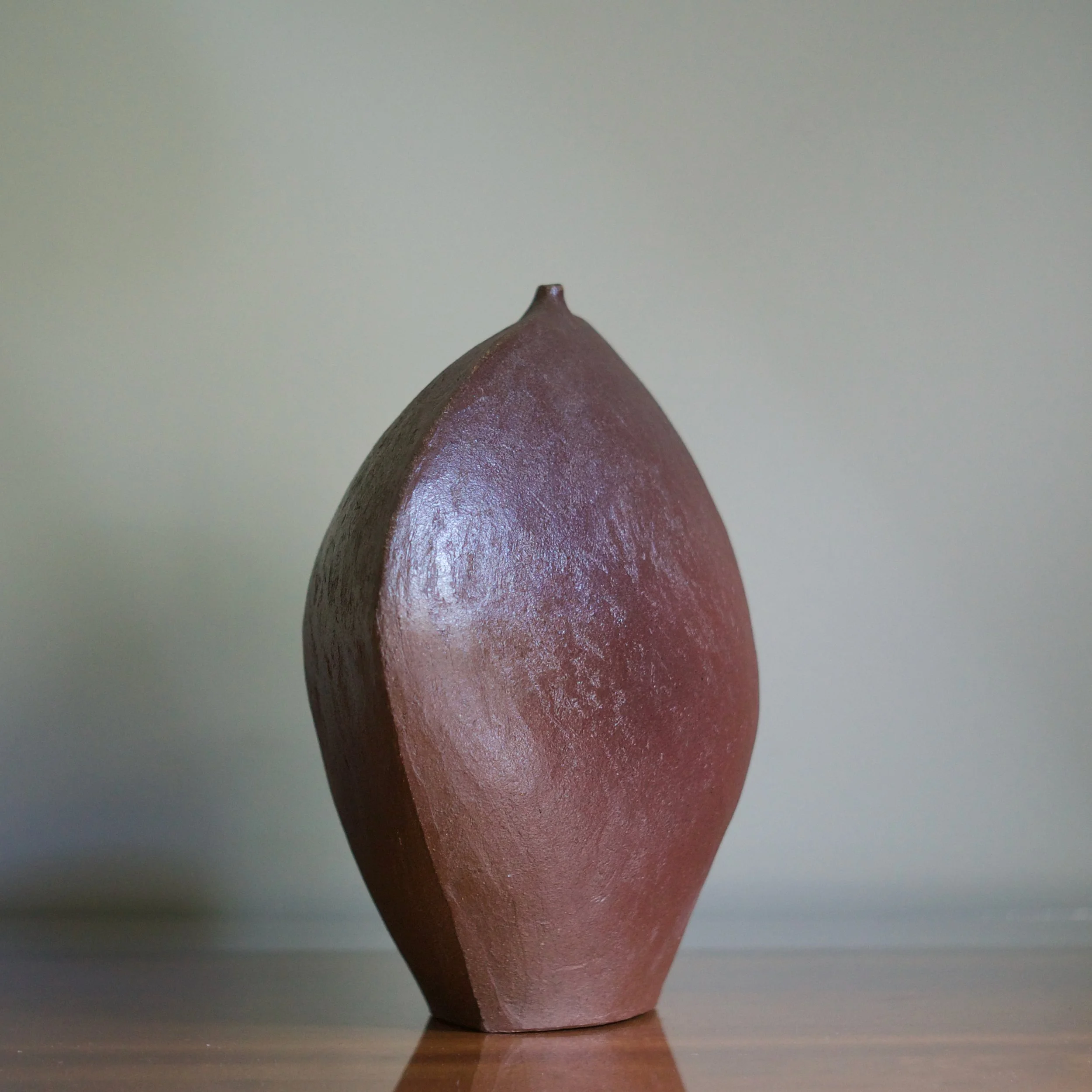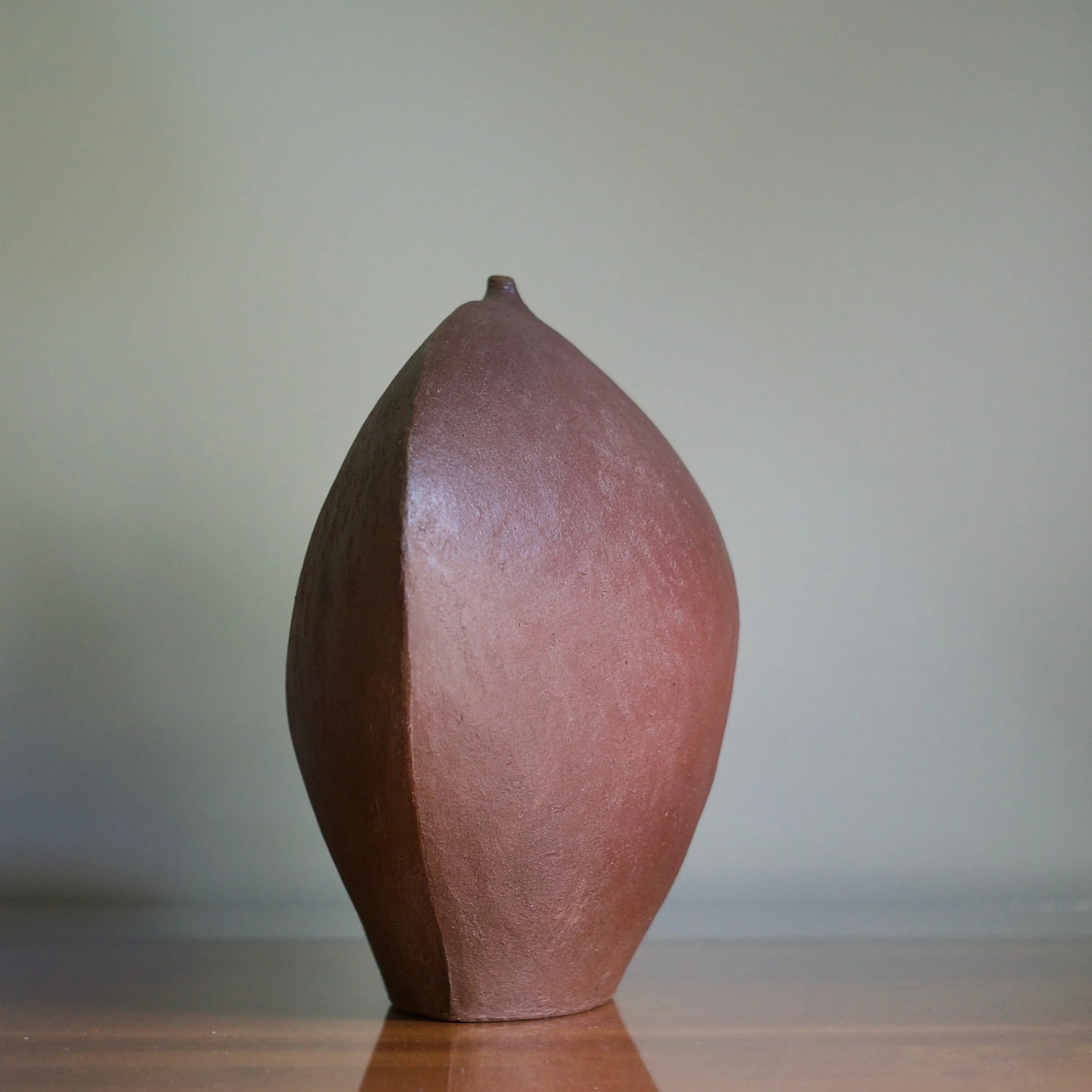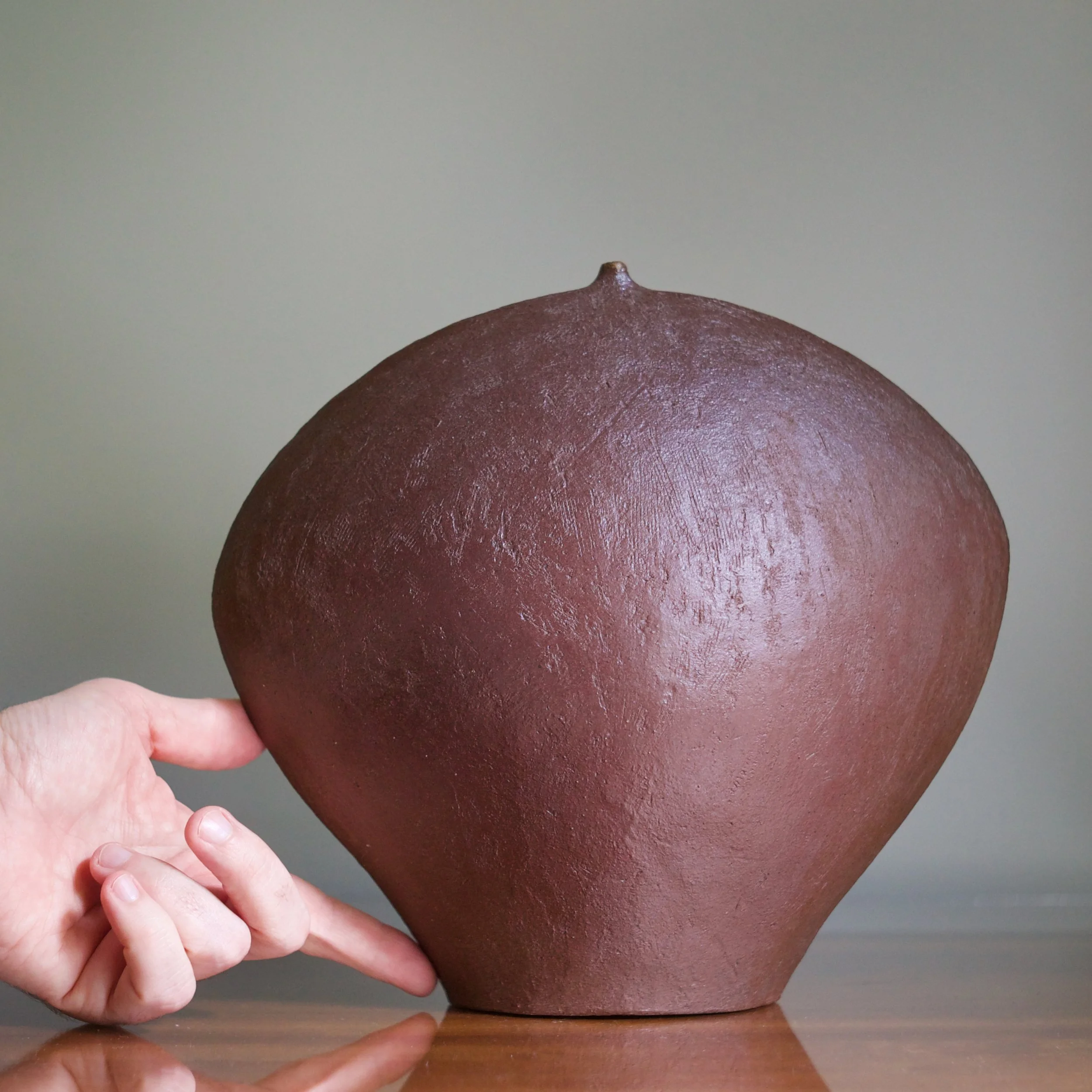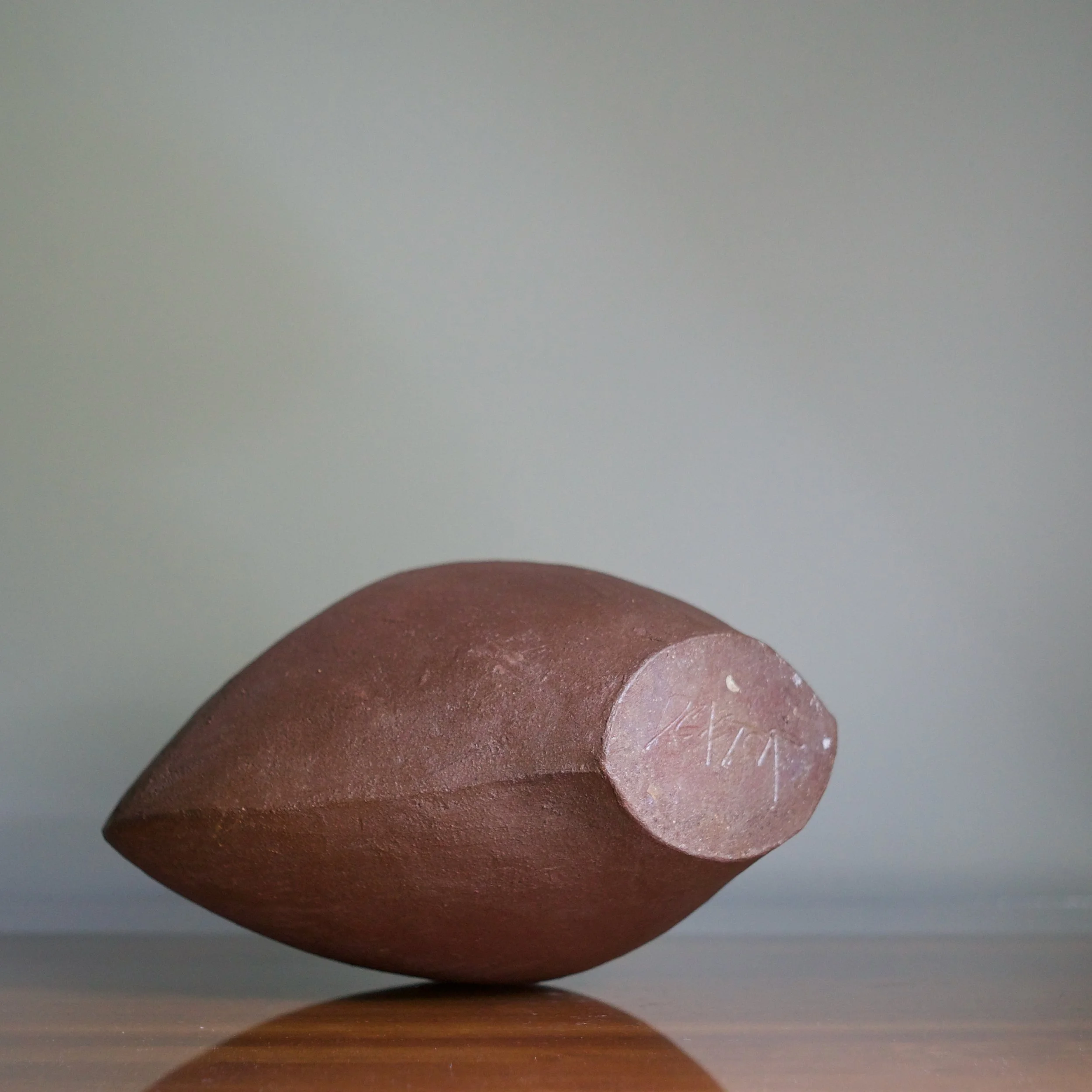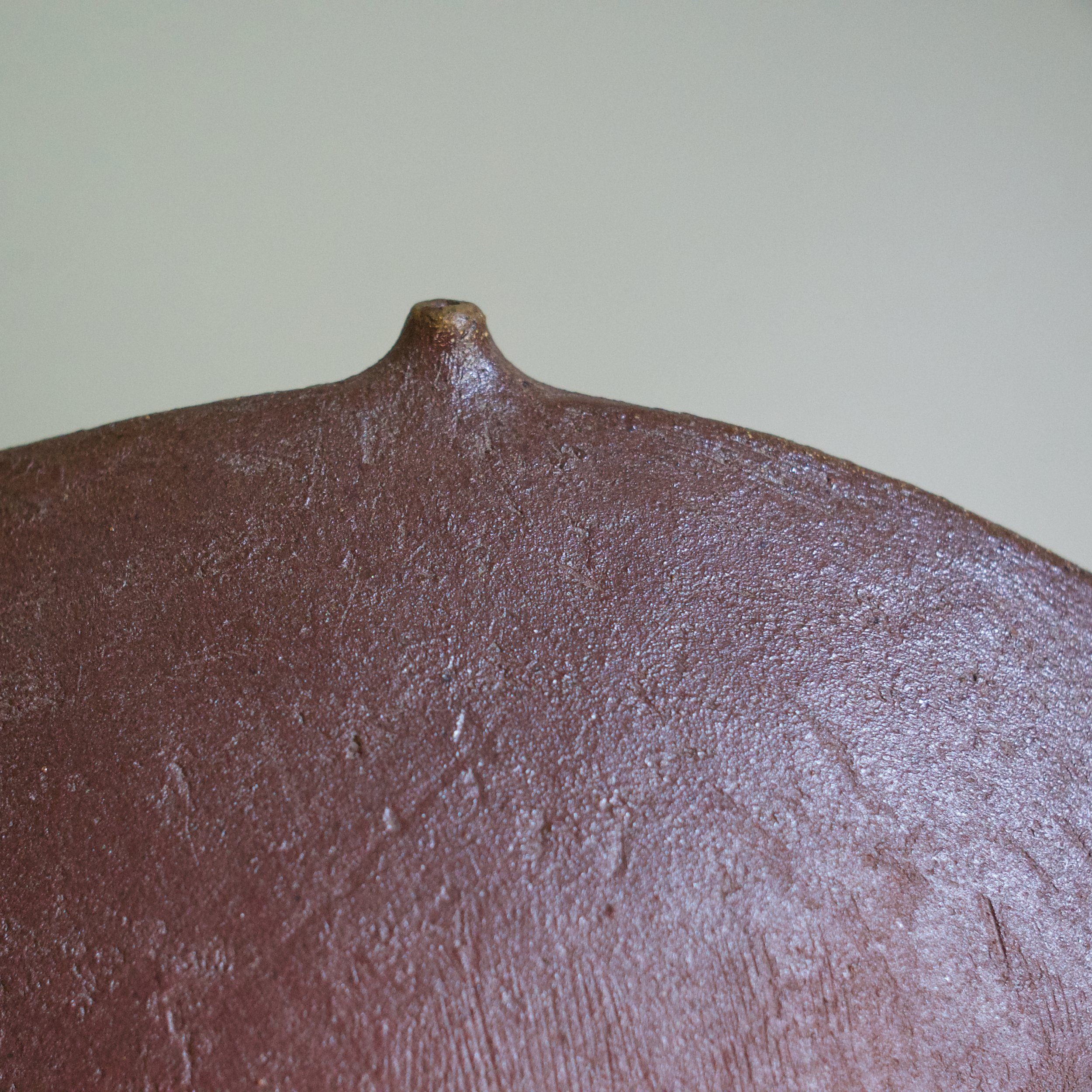Walter DEXTER (1931 - 2015)
Stoneware sculptural vase
British Columbia; c. 1970’s. 10” high by 10 3/4” wide by 6” deep.
$450 (CAD)
Built with two round and swelling slabs, Dexter seamed the edges of this vase in a rolling ridge that peaks with a tiny opening. This could be a mountain landscape or - as a friend suggested - a fallen seed pod. The surface of the red-brown, iron-rich clay is combed and paddled into an organic and expressive texture that plays with the slightest change in light.
One of Western Canada’s most respected potters, Walter Dexter began working with ceramics in Alberta, where he studied under and potted alongside the legendary Luke Lindoe. After attending the Alberta College of Art, Dexter continued his studies at the Swedish School of Arts and Crafts.
He would go on to teach in Vancouver at Emily Carr College of Art, but it was his 7-year tenure at the Kootenay School of Arts in Nelson, starting in 1967, that would prove to be his most influential. Dexter helped shape the school along the lines of European art academies and built its reputation as one of Canada's best art colleges. During Dexter’s time in Nelson, Paul Soldner led a Raku workshop, and his early Raku explorations with Soldner would help popularize the Raku technique known in North America.
In many ways Walter Dexter's work can be seen as exemplifying a post-war amalgam of Scandinavian aesthetics and practices with Abstract Expressionist sensibilities. This clay vase is very much a sculptural object. But with the addition of its tiny opening - capable of holding a single stem - the vase suddenly serves a function and is transformed. Dexter plays with the line between craft and art and the tension between the two that played an important role in post-war ceramics.
